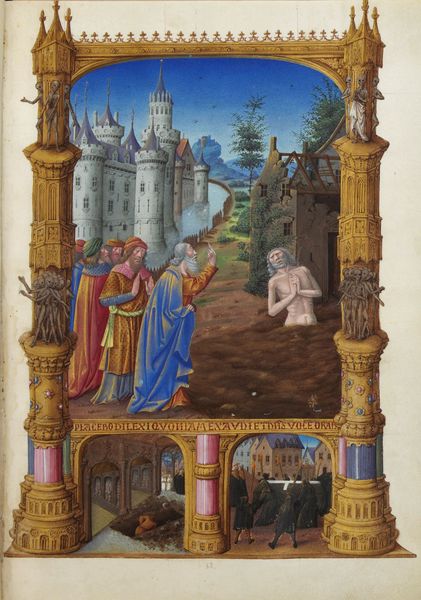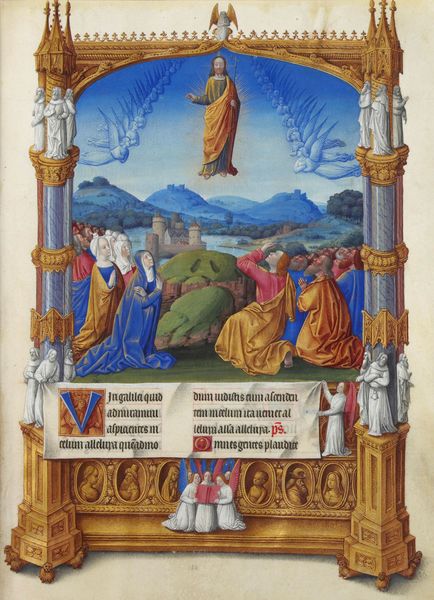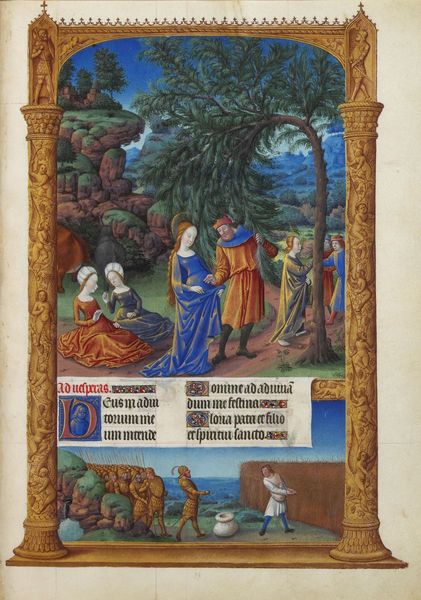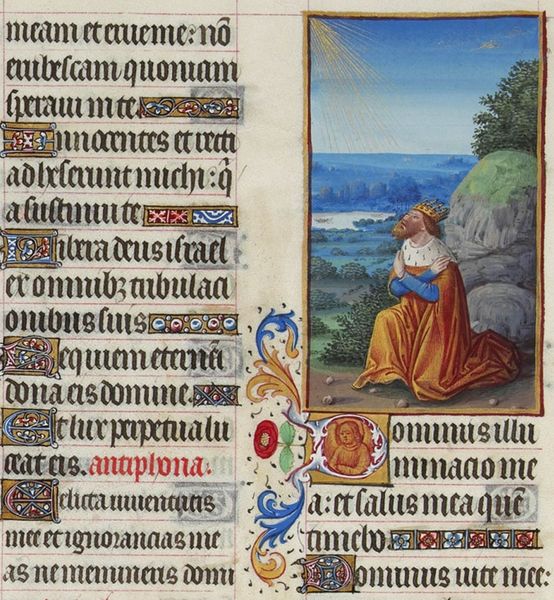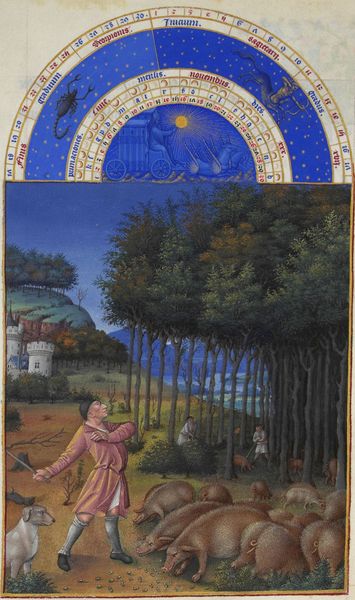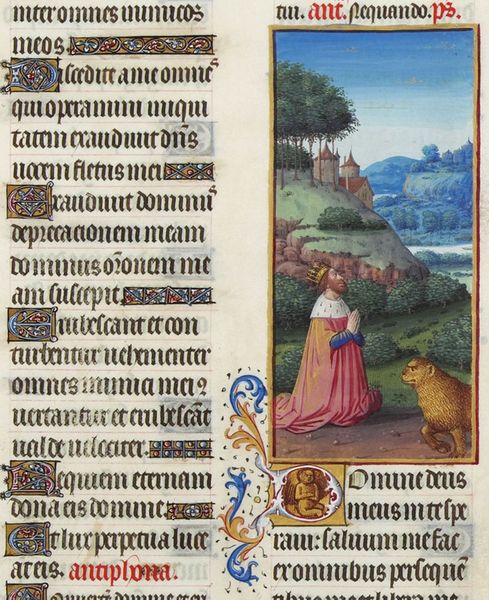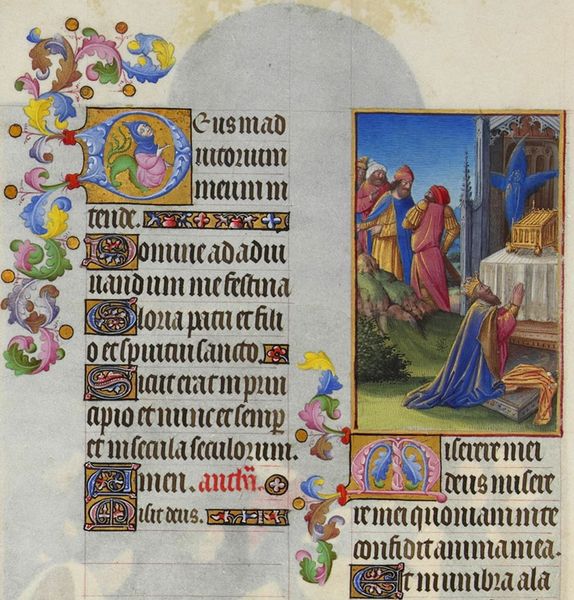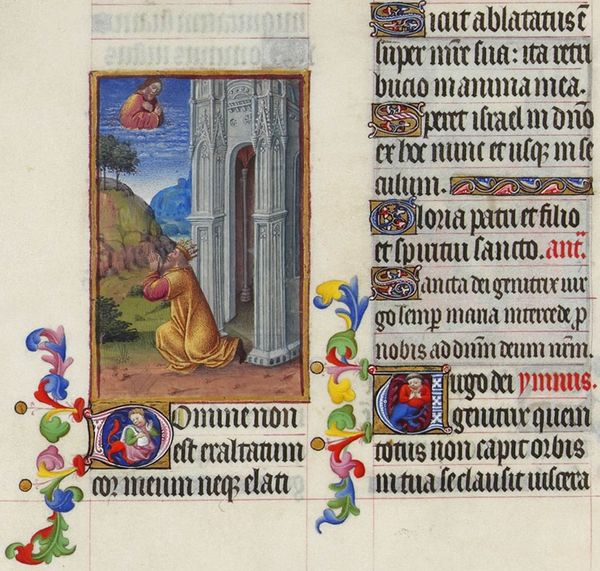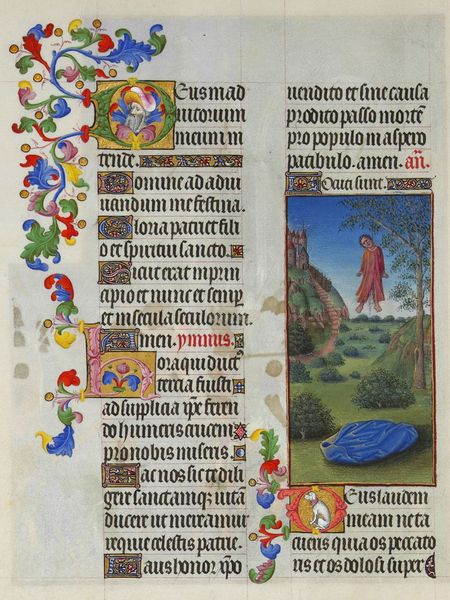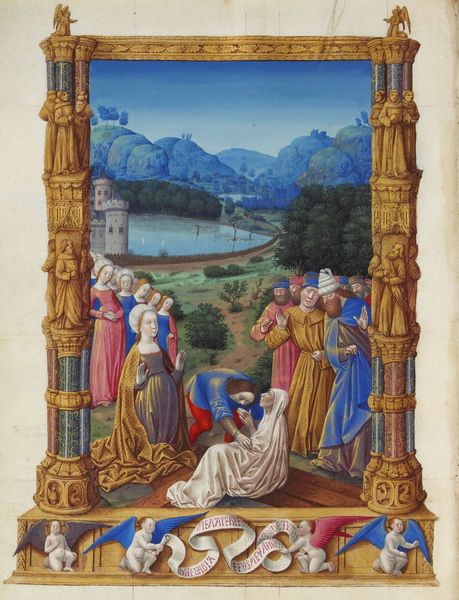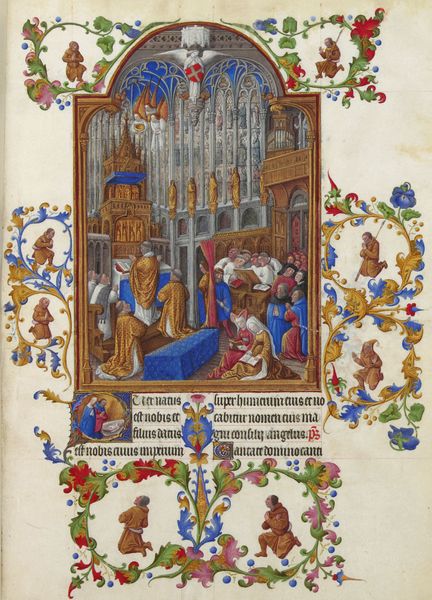
painting, watercolor
#
medieval
#
water colours
#
narrative-art
#
painting
#
landscape
#
figuration
#
watercolor
#
coloured pencil
#
history-painting
#
international-gothic
#
northern-renaissance
#
miniature
#
watercolor
Copyright: Public domain
Curator: Looking at this piece, what catches your eye first? Editor: Honestly? The colors. That dazzling gold armor against the surprisingly chill blues of the landscape—it feels like a dream state. Curator: Well, you’re not far off in associating it with dreams! This is “The Penance of David” by the Limbourg brothers, a watercolor miniature that belongs to a Book of Hours, which would have been a really intimate object owned by wealthy people for their personal devotion. Editor: A miniature! That explains the incredible detail—almost obsessive, wouldn’t you say? Especially in those little scenes tucked into the architectural frame at the bottom. It is wild how they squeezed complete crowd scenes into that little space. What's with the angel dropping a sword? Talk about passive aggressive. Curator: That detail is significant! The angel carrying a sword is a direct visual reference to the consequences of David’s sins. He is being offered a choice between famine, war, or plague as penance for his actions. We see the visual depiction of possible choices in the details down below, the people amassed for war or struck down in pain or hunger. It's all connected symbolically. Editor: So, all that beauty has this dark undertone. It makes you wonder about the psychology of the person flipping through this book, you know? Meditating on power, guilt, redemption… Curator: Absolutely. These images functioned as prompts for intense emotional reflection, almost like a spiritual self-portrait. Note how David is smaller in scale than his architectural surrounding; this draws attention to the way that penance might make one feel overwhelmed, small, and dominated by forces greater than the self. Editor: Forces greater than the self... Yeah, I get that looking at it now. It's heavy, but also strangely beautiful. Even the act of repentance becomes something exquisite here, almost stylized. Curator: Which in itself can be interpreted in many ways! Does it represent the elite having an easy time reconciling with sins and errors, or that they find grandeur in spirituality regardless? That is what is so interesting about visual works that survive through history; it invites more questions than answers and gives the beholder more insight on one's self. Editor: Precisely! You start chasing symbols, but then it loops back to what the image stirs up in you, personally. Curator: Indeed, a miniature world of introspection within an even smaller book.
Comments
No comments
Be the first to comment and join the conversation on the ultimate creative platform.
